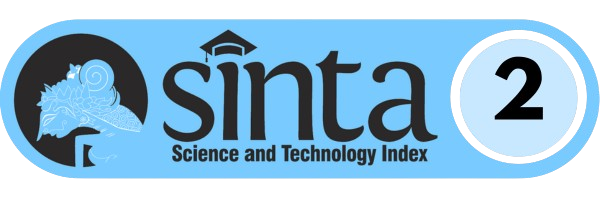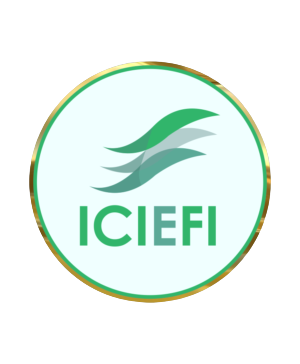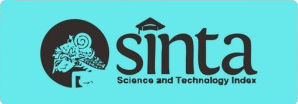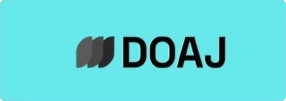The Comparison of Circular Economy Analysis in Developed and Developing Countries
DOI:
https://doi.org/10.24269/ekuilibrium.v19i1.2024.pp1-17Abstract This study seeks to present a better understanding of knowledge about the circular economy by referring to literature studies in developed and developing countries during the observation period from 2006 to 2022. This study provides an overview of the bibliometric approach: time analysis, journal analysis, co-authorship analysis, keyword analysis, citation analysis, country analysis, and agency analysis. The level of research contribution in developed and developing countries tended to be low until 2016, increasing significantly in recent years. Keyword analysis reveals that Circular Economy has the highest contribution in 2019 for developed countries and in 2020 for developing countries. Then, the citation analysis shows that "Towards a National Circular Economy Indicator System in China: An Evaluation and Critical Analysis" has the highest citation. And China became the number one country for its contribution to circular economy publications globally. This study suggests that developed and developing countries collectively have a deeper understanding of the circular economy concept for sustainable green economic growth globally.
References
Donthu, N., Kumar, S., Mukherjee, D., Pandey, N., & Lim, W. M. (2021). How to conduct a bibliometric analysis: An overview and guidelines. Journal of Business Research, 133(March), 285–296. https://doi.org/10.1016/j.jbusres.2021.04.070
Ezeudu, O. B., & Ezeudu, T. S. (2019). Implementation of circular economy principles in industrial solid waste management: Case studies from a developing economy (Nigeria). Recycling, 4(4). https://doi.org/10.3390/recycling4040042
GarcÃa-Quevedo, J., Jové-Llopis, E., & MartÃnez-Ros, E. (2020). Barriers to the circular economy in European small and medium-sized firms. Business Strategy and the Environment, 29(6), 2450–2464. https://doi.org/10.1002/bse.2513
Geissdoerfer, M., Savaget, P., Bocken, N. M. P., & Hultink, E. J. (2017). The Circular Economy – A new sustainability paradigm? Journal of Cleaner Production, 143, 757–768. https://doi.org/10.1016/j.jclepro.2016.12.048
Geng, Y., Fu, J., Sarkis, J., & Xue, B. (2012). Towards a national circular economy indicator system in China: An evaluation and critical analysis. Journal of Cleaner Production, 23(1), 216–224. https://doi.org/10.1016/j.jclepro.2011.07.005
Gravitiani, E., Sasanti, I. A., Sartika, R. C., & Cahyadin, M. (2022). The Role of Stakeholders in Sustainable Tourism using Mactor Analysis: Evidence from Kragilan’s Top Selfie, Magelang, Indonesia. Ekuilibrium : Jurnal Ilmiah Bidang Ilmu Ekonomi, 17(2), 102–109. https://doi.org/10.24269/ekuilibrium.v17i2.2022.pp102-109
Halog, A., & Anieke, S. (2021). A Review of Circular Economy Studies in Developed Countries and Its Potential Adoption in Developing Countries. Circular Economy and Sustainability, 1(1), 209–230. https://doi.org/10.1007/s43615-021-00017-0
Homrich, A. S., Galvão, G., Abadia, L. G., & Carvalho, M. M. (2018). The circular economy umbrella: Trends and gaps on integrating pathways. Journal of Cleaner Production, 175, 525–543. https://doi.org/10.1016/j.jclepro.2017.11.064
Huang, L., Kelly, S., Lv, K., & Giurco, D. (2019). A systematic review of empirical methods for modelling sectoral carbon emissions in China. Journal of Cleaner Production, 215, 1382–1401. https://doi.org/10.1016/j.jclepro.2019.01.058
Ngan, S. L., How, B. S., Teng, S. Y., Promentilla, M. A. B., Yatim, P., Er, A. C., & Lam, H. L. (2019). Prioritization of sustainability indicators for promoting the circular economy: The case of developing countries. Renewable and Sustainable Energy Reviews, 111(May), 314–331. https://doi.org/10.1016/j.rser.2019.05.001
Nguyen, M. H., Nguyen, H. T. T., Le, T. T., Luong, A. P., & Vuong, Q. H. (2022). Gender issues in family business research: A bibliometric scoping review. Journal of Asian Business and Economic Studies, 29(3), 166–188. https://doi.org/10.1108/JABES-01-2021-0014
Purnomo, R. A., Malynka, O., & Prananto, A. (2023). Sustainable Business Development Via Applying an Online Business Model for Gaining Benefit in Economics, Education, and Social Network. Ekuilibrium : Jurnal Ilmiah Bidang Ilmu Ekonomi, 18(1), 1–10. https://doi.org/10.24269/ekuilibrium.v18i1.2023.pp1-10
Ranjbari, M., Saidani, M., Shams Esfandabadi, Z., Peng, W., Lam, S. S., Aghbashlo, M., Quatraro, F., & Tabatabaei, M. (2021). Two decades of research on waste management in the circular economy: Insights from bibliometric, text mining, and content analyses. Journal of Cleaner Production, 314(June), 128009. https://doi.org/10.1016/j.jclepro.2021.128009
Ruiz-Real, J. L., Uribe-Toril, J., Valenciano, J. D. P., & Gázquez-Abad, J. C. (2018). Worldwide research on circular economy and environment: A bibliometric analysis. International Journal of Environmental Research and Public Health, 15(12). https://doi.org/10.3390/ijerph15122699
Singh, J., & Ordoñez, I. (2016). Resource recovery from post-consumer waste: important lessons for the upcoming circular economy. Journal of Cleaner Production, 134(2015), 342–353. https://doi.org/10.1016/j.jclepro.2015.12.020
Theeraworawit, M., Suriyankietkaew, S., & Hallinger, P. (2022). Sustainable Supply Chain Management in a Circular Economy: A Bibliometric Review. Sustainability (Switzerland), 14(15). https://doi.org/10.3390/su14159304
Tsuchimoto, I., & Kajikawa, Y. (2022). Recycling of Plastic Waste: A Systematic Review Using Bibliometric Analysis. Sustainability (Switzerland), 14(24), 1–39. https://doi.org/10.3390/su142416340
Wibowo, A. R., & Indrayanti, W. (2020). Institutional Analysis of Shadow Economy (Study on ASEAN 7 Developing Countries). Ekuilibrium : Jurnal Ilmiah Bidang Ilmu Ekonomi, 15(1), 55. https://doi.org/10.24269/ekuilibrium.v15i1.2373
Wimbadi, R. W., & Djalante, R. (2020). From decarbonization to low carbon development and transition: A systematic literature review of the conceptualization of moving toward net-zero carbon dioxide emission (1995–2019). Journal of Cleaner Production, 256, 120307. https://doi.org/10.1016/j.jclepro.2020.120307
Zupic, I., & Čater, T. (2015). Bibliometric Methods in Management and Organization. Organizational Research Methods, 18(3), 429–472. https://doi.org/10.1177/1094428114562629
Downloads
Published
How to Cite
Issue
Section
License
Retained Rights/Terms and Conditions of Publication
1. As an author you (or your employer or institution) may do the following:
- make copies (print or electronic) of the article for your own personal use, including for your own classroom teaching use;
- make copies and distribute such copies (including through e-mail) of the article to research colleagues, for the personal use by such colleagues (but not commercially or systematically, e.g. via an e-mail list or list server);
- present the article at a meeting or conference and to distribute copies of the article to the delegates attending such meeting;
- for your employer, if the article is a ‘work for hire’, made within the scope of your employment, your employer may use all or part of the information in the article for other intra-company use (e.g. training);
- retain patent and trademark rights and rights to any process, procedure, or article of manufacture described in the article;
- include the article in full or in part in a thesis or dissertation (provided that this is not to be published commercially);
- use the article or any part thereof in a printed compilation of your works, such as collected writings or lecture notes (subsequent to publication of the article in the journal); and prepare other derivative works, to extend the article into book-length form, or to otherwise re-use portions or excerpts in other works, with full acknowledgement of its original publication in the journal;
- may reproduce or authorize others to reproduce the article, material extracted from the article, or derivative works for the author's personal use or for company use, provided that the source and the copyright notice are indicated, the copies are not used in any way that implies RCEPM-LIPI endorsement of a product or service of any employer, and the copies themselves are not offered for sale.
All copies, print or electronic, or other use of the paper or article must include the appropriate bibliographic citation for the article's publication in the journal.
2. Requests from third parties
Although authors are permitted to re-use all or portions of the article in other works, this does not include granting third-party requests for reprinting, republishing, or other types of re-use. Requests for all uses not included above, including the authorization of third parties to reproduce or otherwise use all or part of the article.
3. Author Online Use
- Personal Servers. Authors and/or their employers shall have the right to post the accepted version of articles pre-print version of the article, or revised personal version of the final text of the article (to reflect changes made in the peer review and editing process) on their own personal servers or the servers of their institutions or employers without permission from Universitas Muhamamdiyah Ponorogo, provided that the posted version includes a prominently displayed Universitas Muhamamdiyah Ponorogo copyright notice and, when published, a full citation to the original publication, including a link to the article abstract in the journal homepage. Authors shall not post the final, published versions of their papers;
- Classroom or Internal Training Use. An author is expressly permitted to post any portion of the accepted version of his/her own articles on the author's personal web site or the servers of the author's institution or company in connection with the author's teaching, training, or work responsibilities, provided that the appropriate copyright, credit, and reuse notices appear prominently with the posted material. Examples of permitted uses are lecture materials, course packs, e-reserves, conference presentations, or in-house training courses;
- Electronic Preprints. Before submitting an article to an Ekuilibrium: Jurnal Ilmiah Bidang Ilmu Ekonomi, authors frequently post their manuscripts to their own web site, their employer's site, or to another server that invites constructive comment from colleagues. Upon submission of an article to Ekuilibrium: Jurnal Ilmiah Bidang Ilmu Ekonomi, an author is required to transfer copyright in the article to Economy Faculty Universitas Muhammadiyah Ponorogo, and the author must update any previously posted version of the article with a prominently displayed Economy Faculty Universitas Muhammadiyah Ponorogo copyright notice. Upon publication of an article by the Universitas Muhammadiyah Ponorogo, the author must replace any previously posted electronic versions of the article with either (1) the full citation to the work with a Digital Object Identifier (DOI) or link to the article abstract in Ekuilibrium: Jurnal Ilmiah Bidang Ilmu Ekonomi journal homepage, or (2) the accepted version only (not the final, published version), including the Economy Faculty Universitas Muhammadiyah Ponorogo copyright notice and full citation, with a link to the final, published article in journal homepage.
4. Articles in Press (AiP) service
Economy Faculty Universitas Muhammadiyah Ponorogo may choose to publish an abstract or portions of the paper before we publish it in the journal. Please contact our Production department immediately if you do not want us to make any such prior publication for any reason, including disclosure of a patentable invention.
5. Author/Employer Rights
If you are employed and prepared the article on a subject within the scope of your employment, the copyright in the article belongs to your employer as a work-for-hire. In that case, Economy Faculty Universitas Muhammadiyah Ponorogo assumes that when you sign this Form, you are authorized to do so by your employer and that your employer has consented to the transfer of copyright, to the representation and warranty of publication rights, and to all other terms and conditions of this Form. If such authorization and consent has not been given to you, an authorized representative of your employer should sign this Form as the Author.
6. RCEPM-LIPI Copyright Ownership
It is the formal policy of Economy Faculty Universitas Muhammadiyah Ponorogo to own the copyrights to all copyrightable material in its technical publications and to the individual contributions contained therein, in order to protect the interests of the Economy Faculty Universitas Muhammadiyah Ponorogo, its authors and their employers, and, at the same time, to facilitate the appropriate re-use of this material by others. Economy Faculty Universitas Muhammadiyah Ponorogo distributes its technical publications throughout the world and does so by various means such as hard copy, microfiche, microfilm, and electronic media. It also abstracts and may translate its publications, and articles contained therein, for inclusion in various compendiums, collective works, databases and similar publication.
7. Licensing Terms
Ekuilibrium is licensed under a Creative Commons Attribution-ShareAlike 4.0 International License.
Permissions beyond the scope of this license may be available at https://journal.umpo.ac.id/











